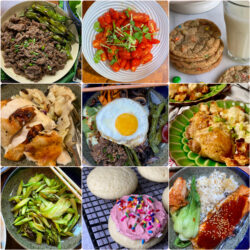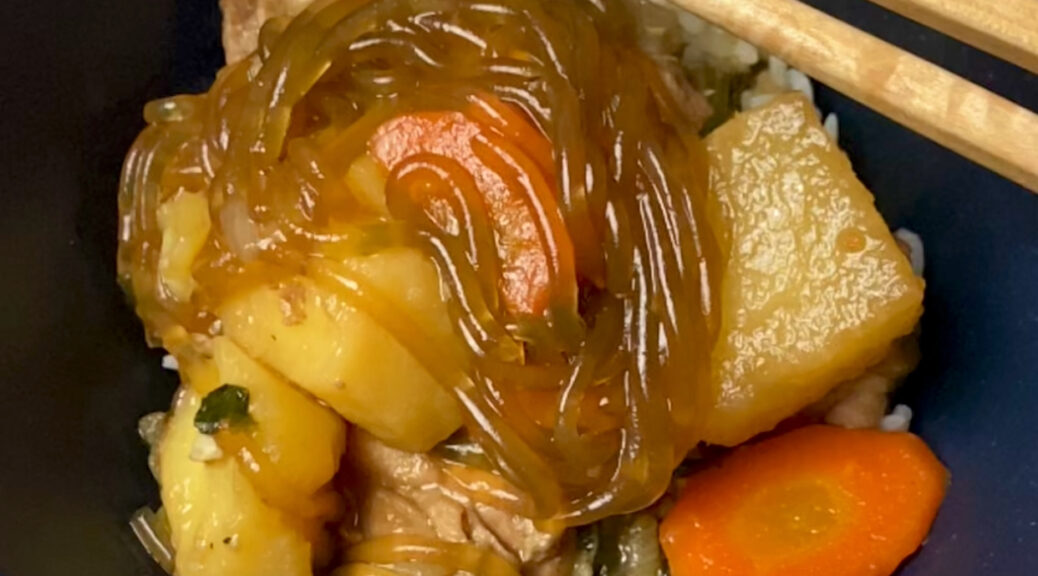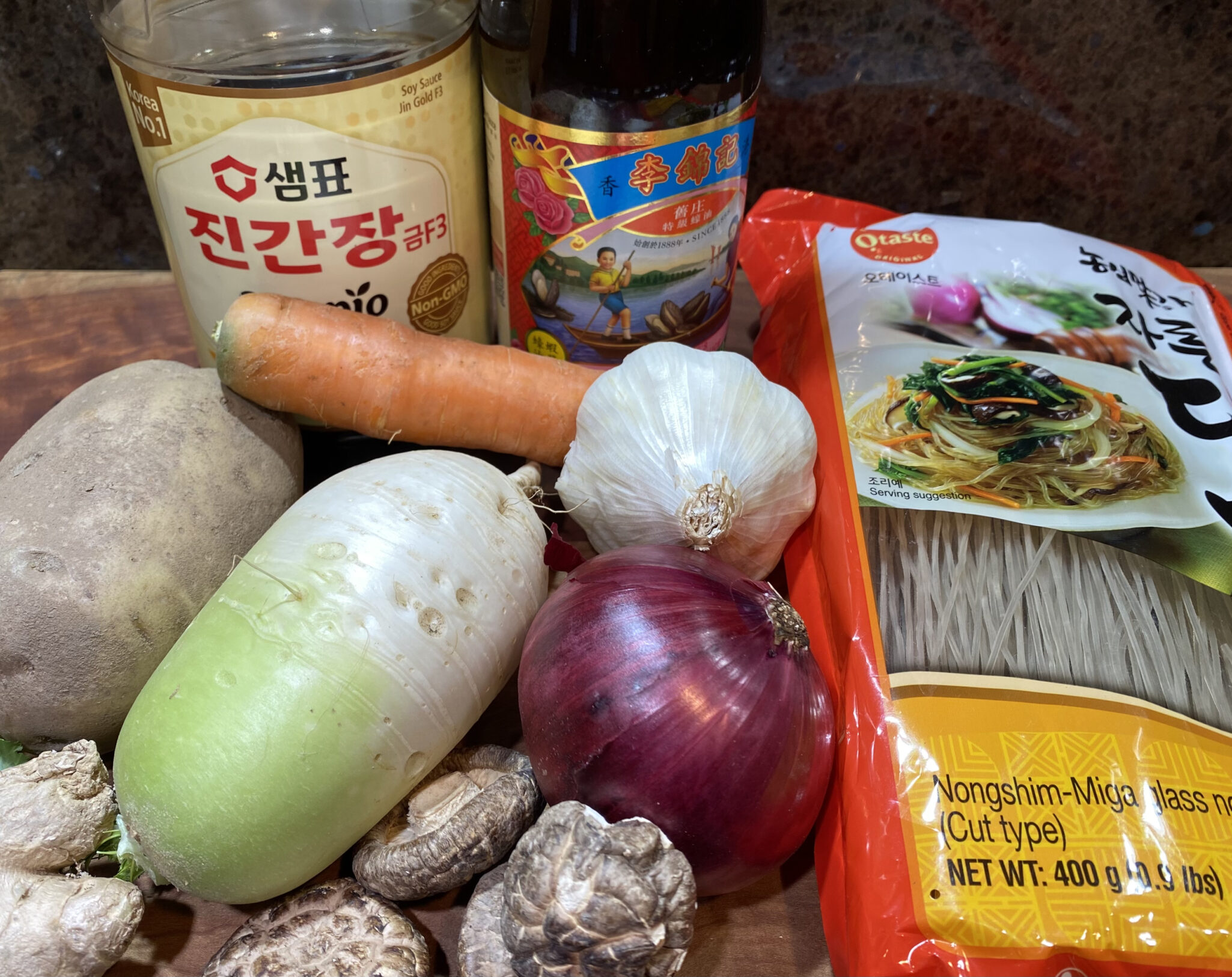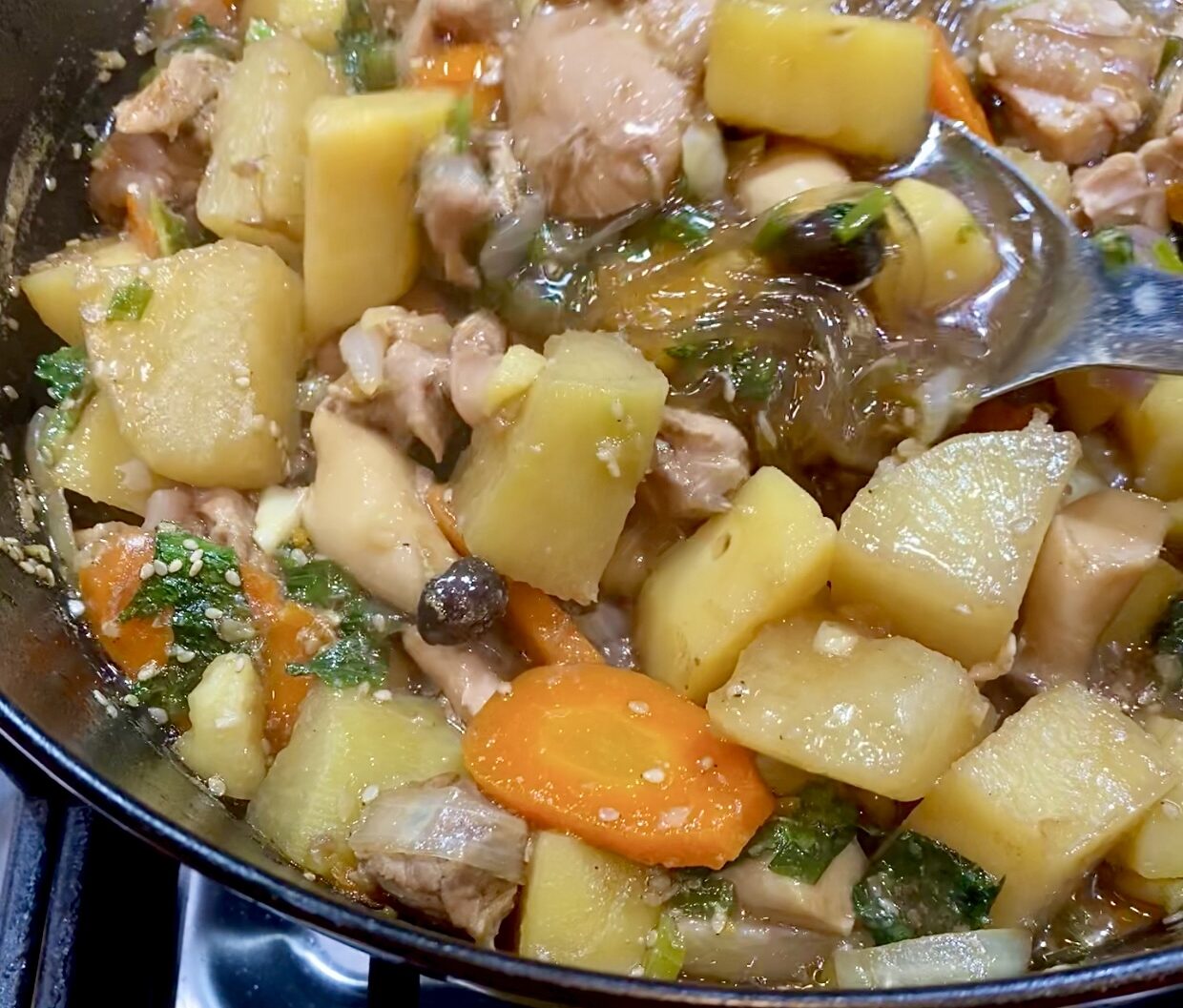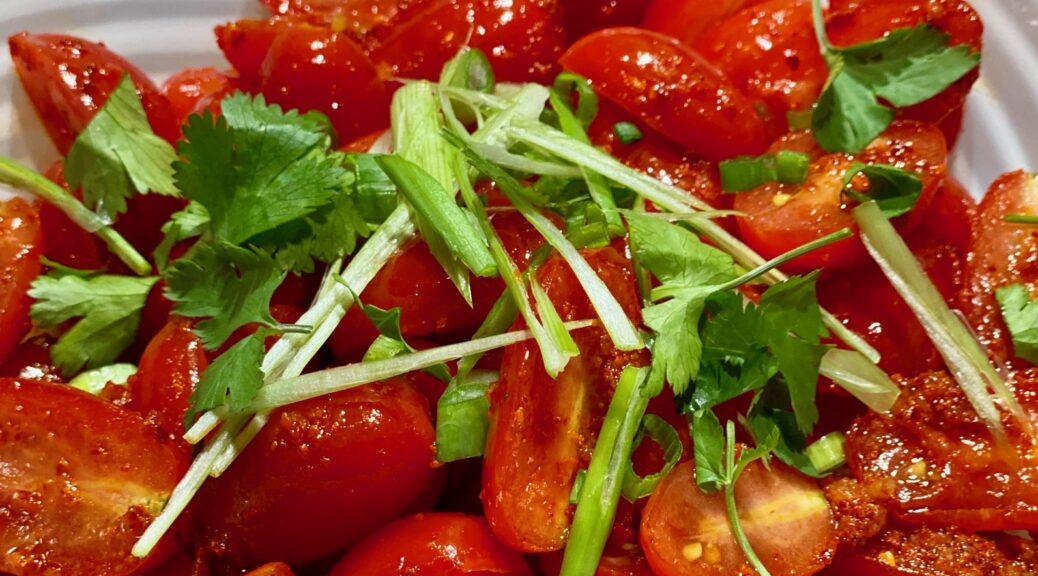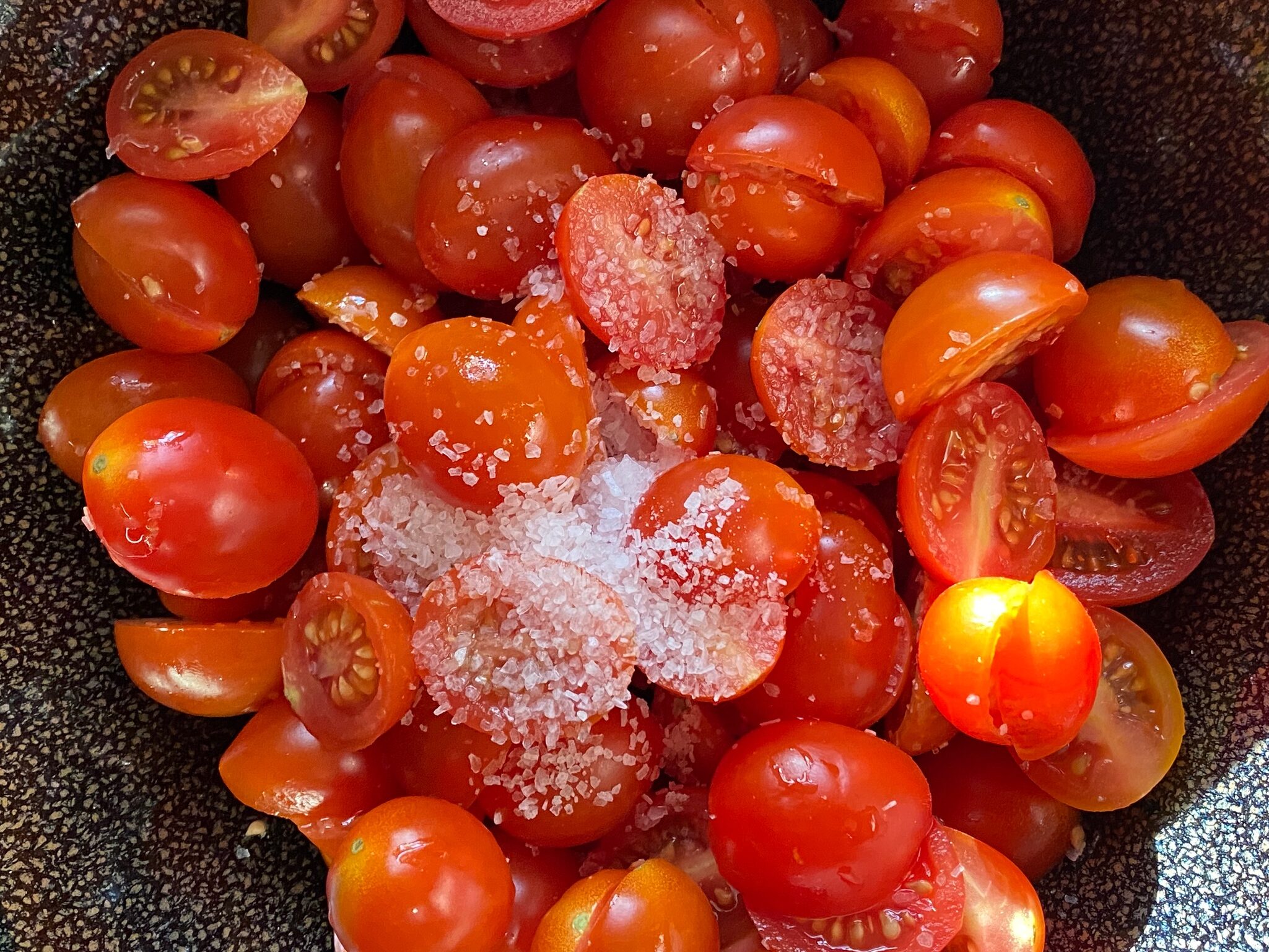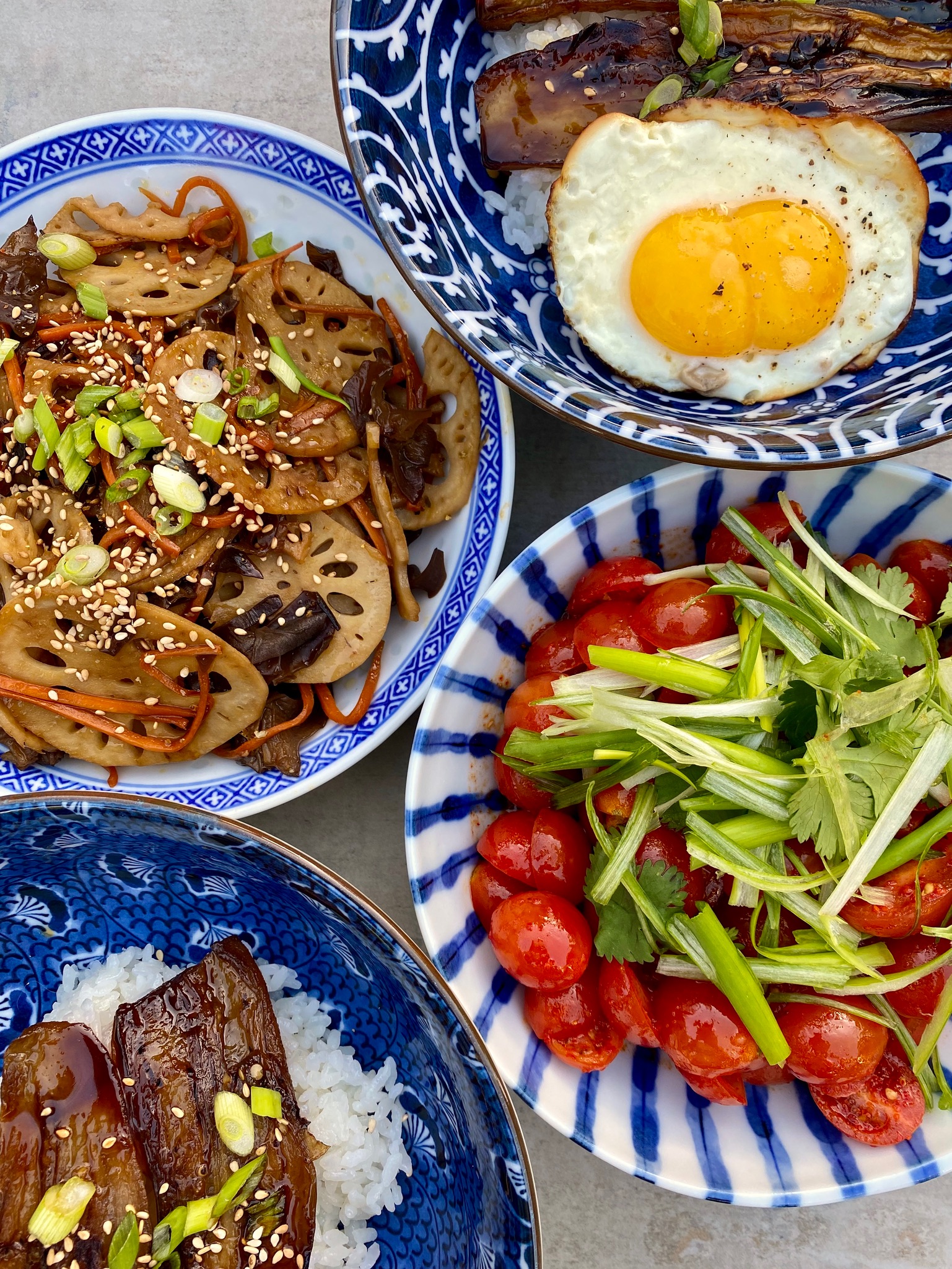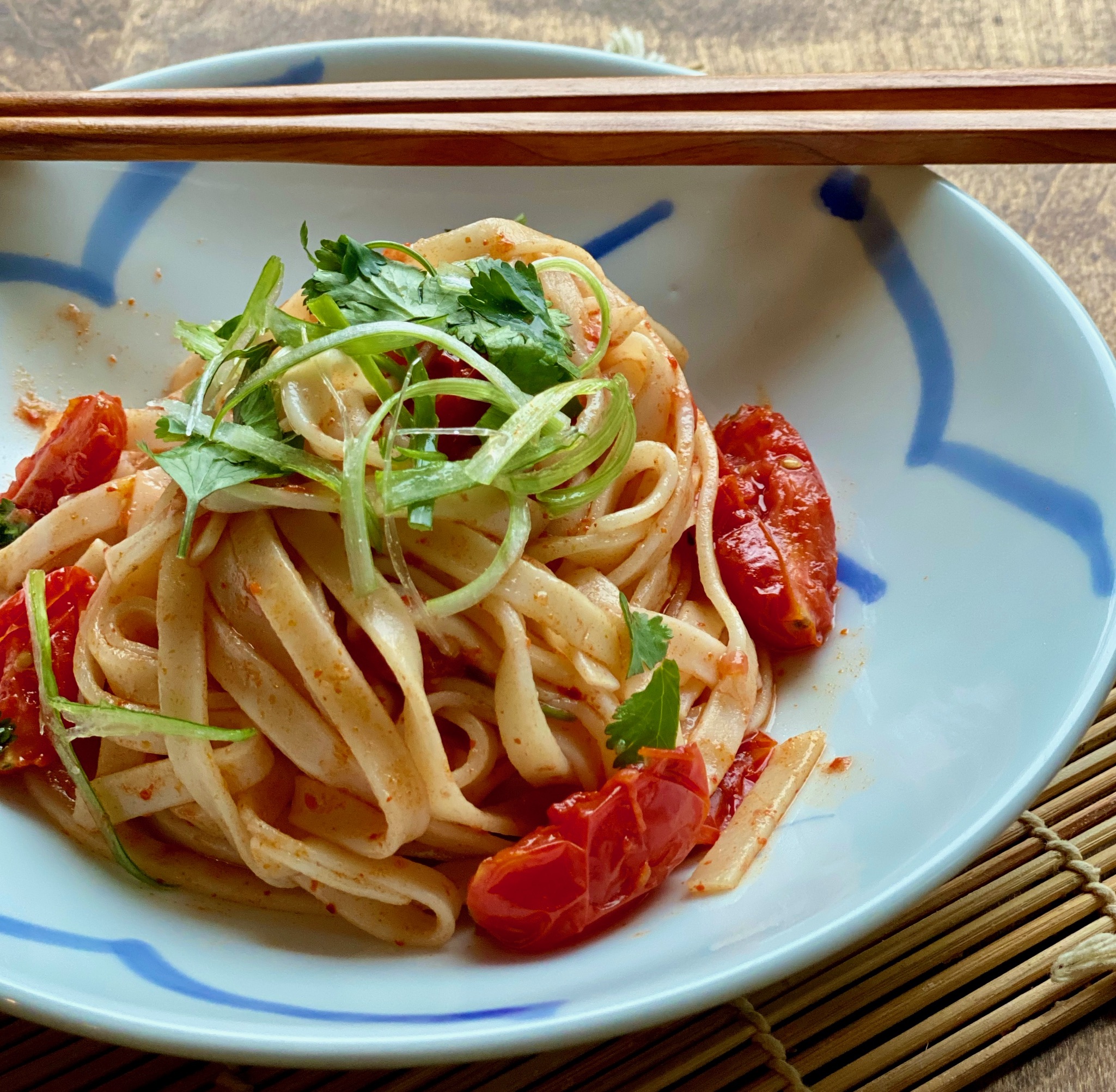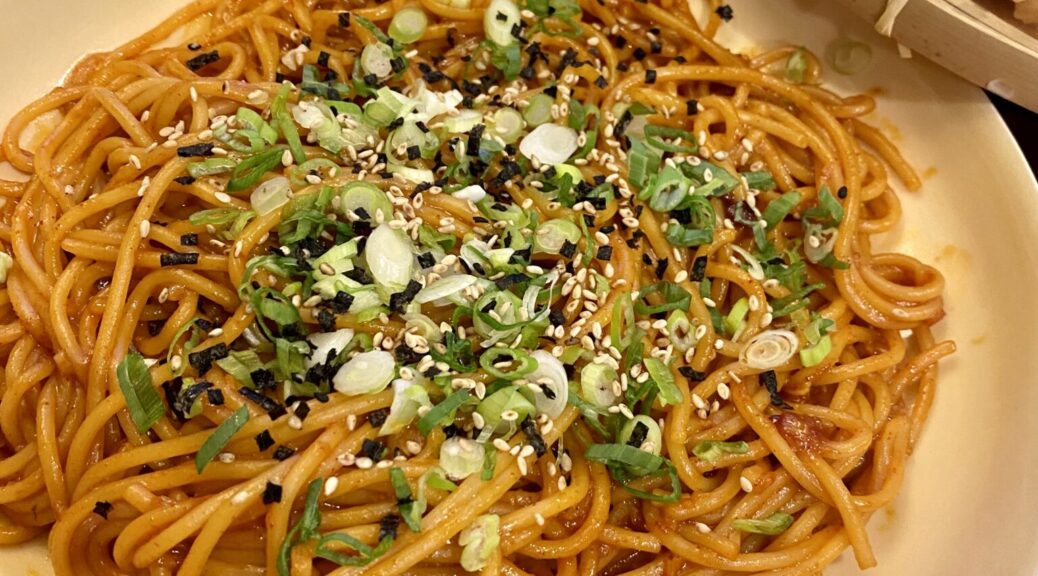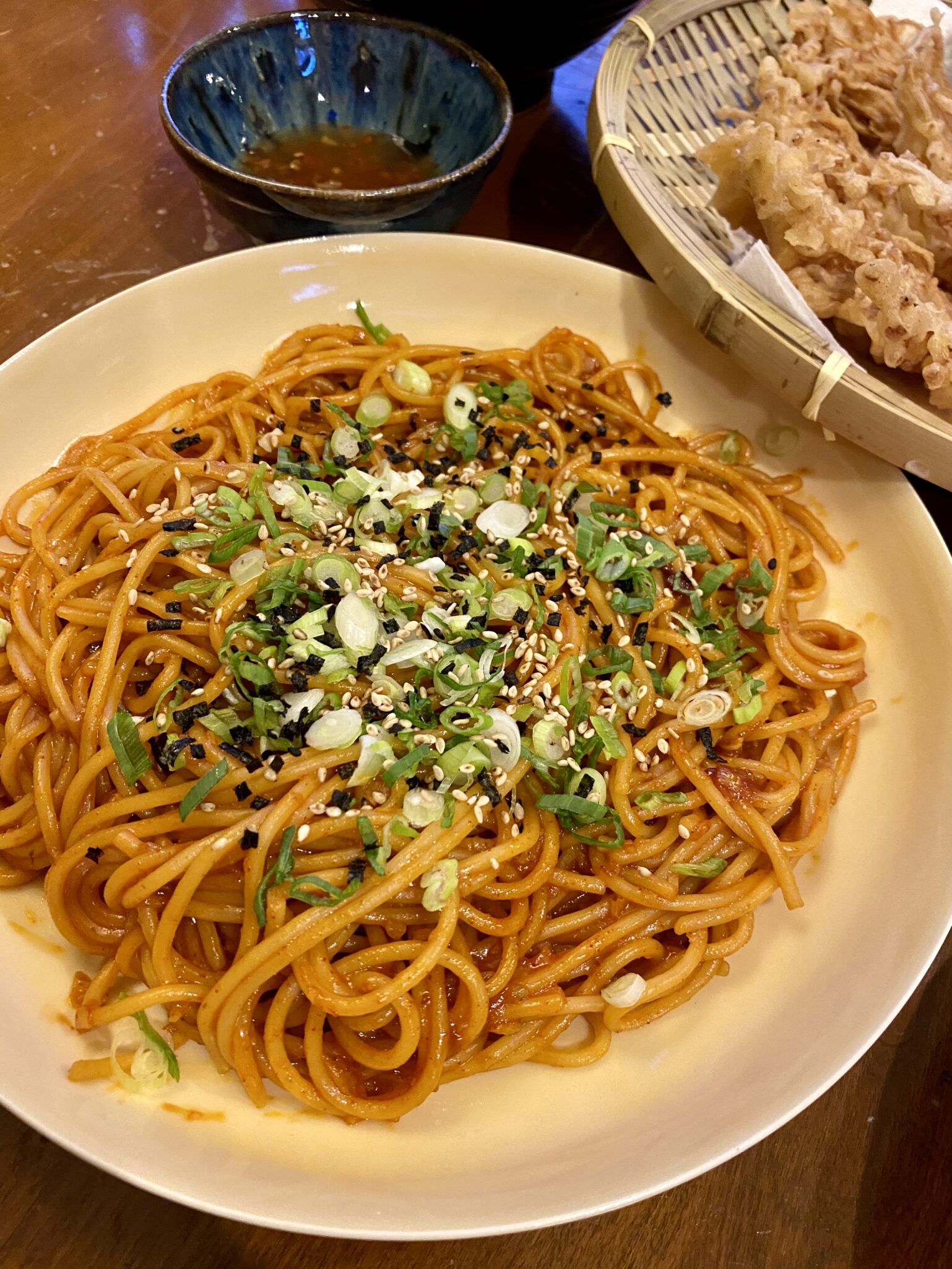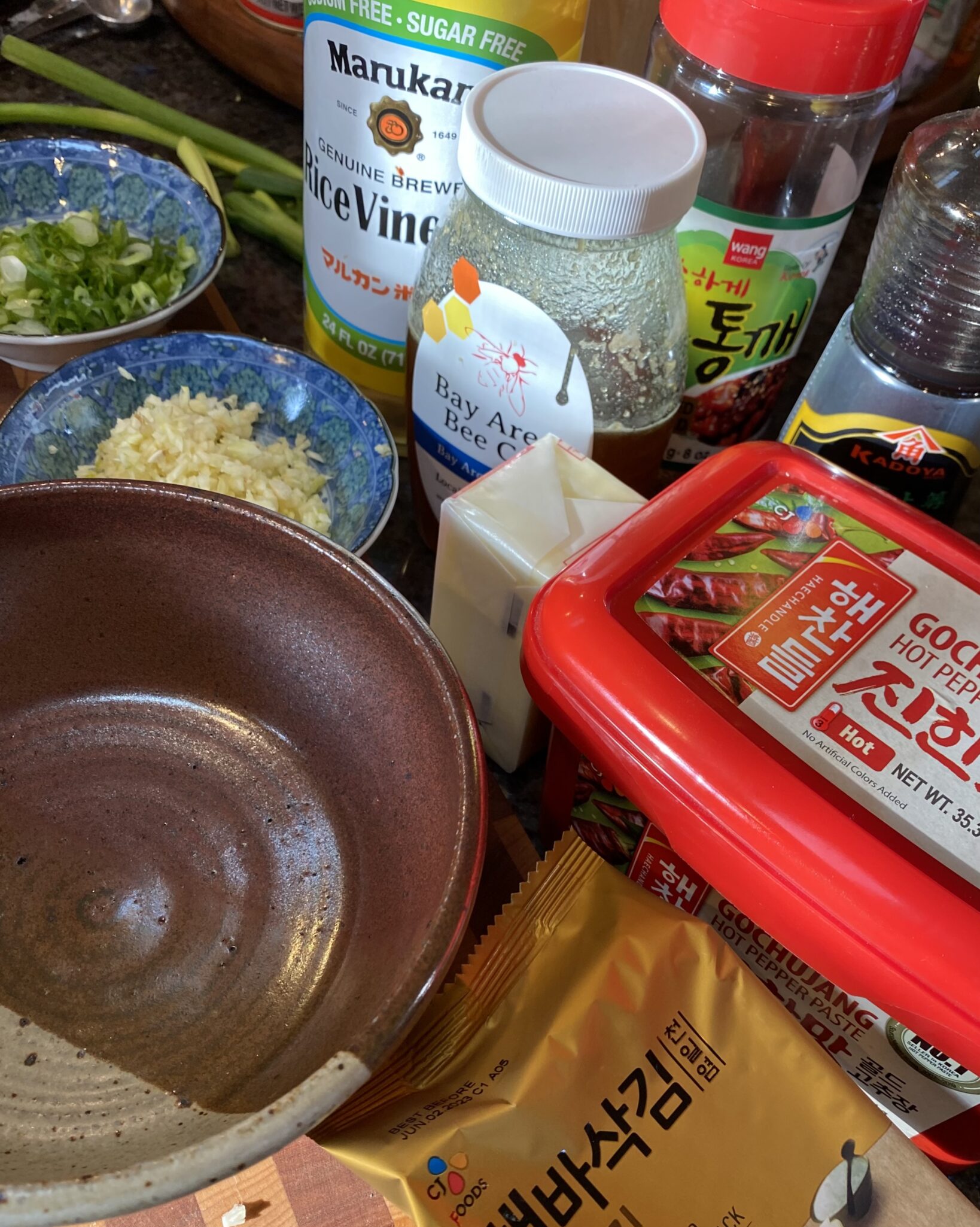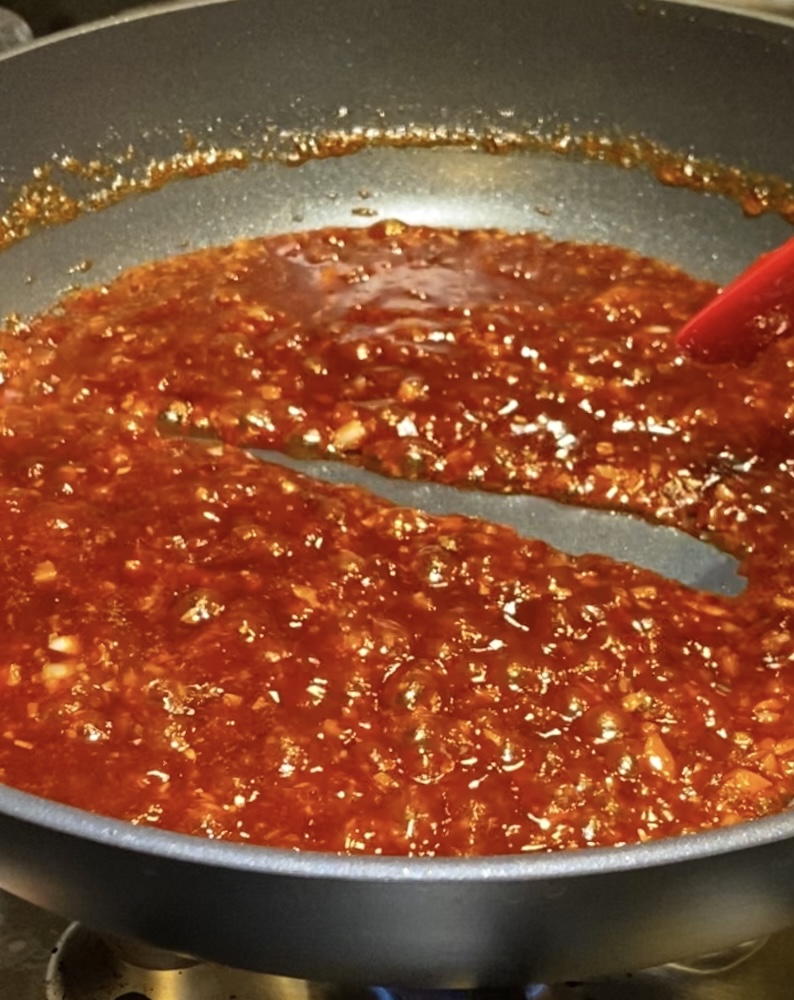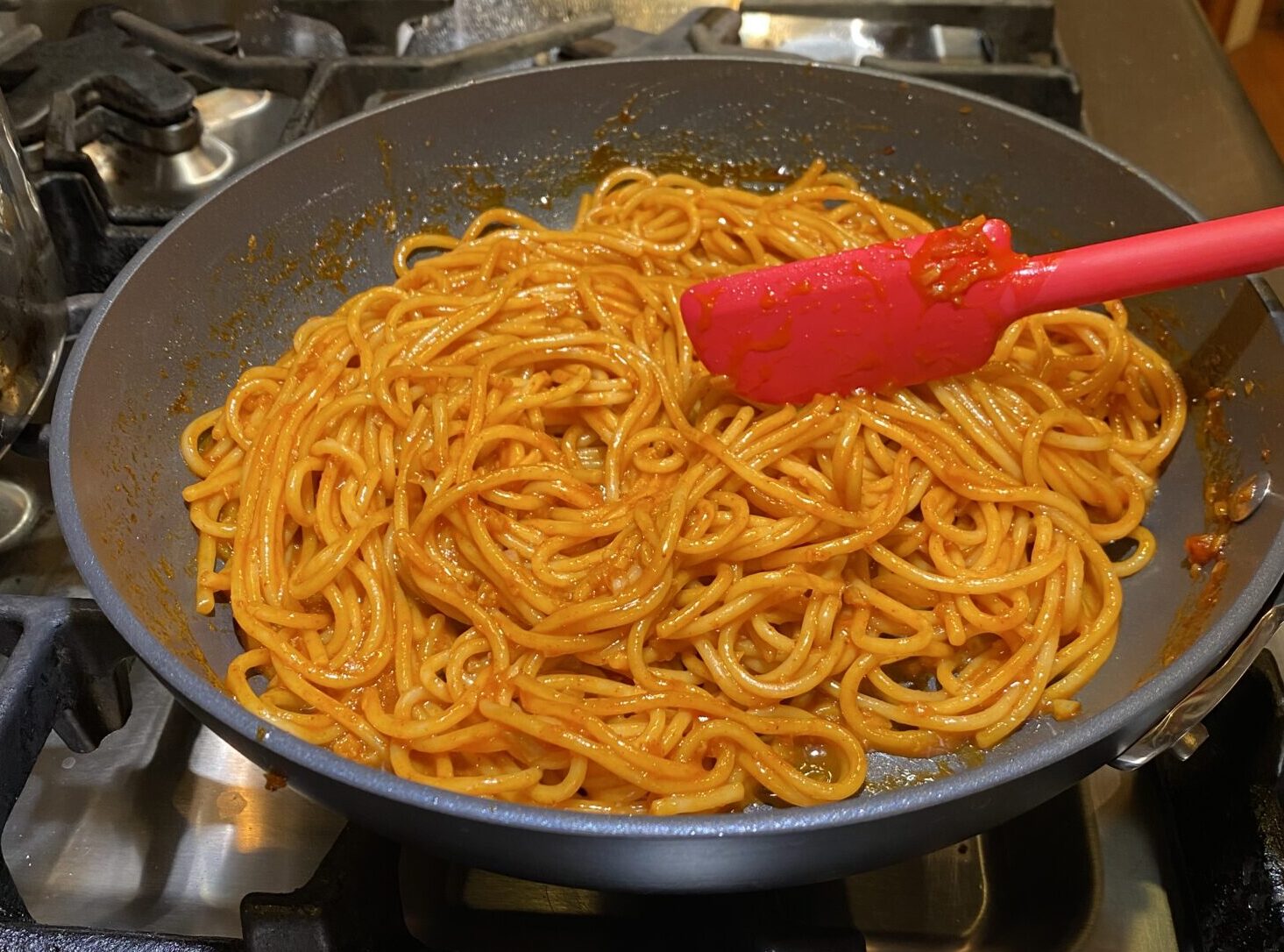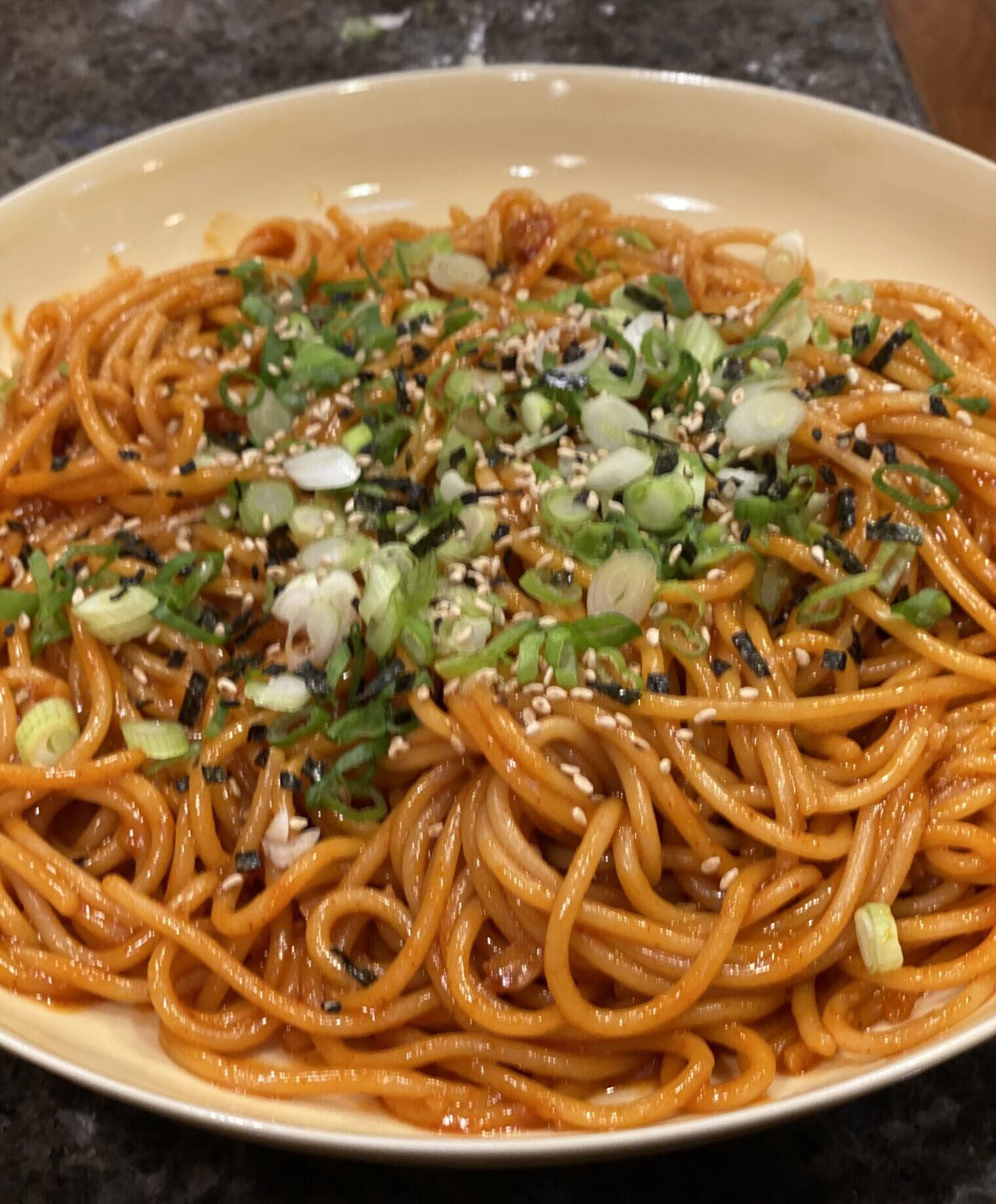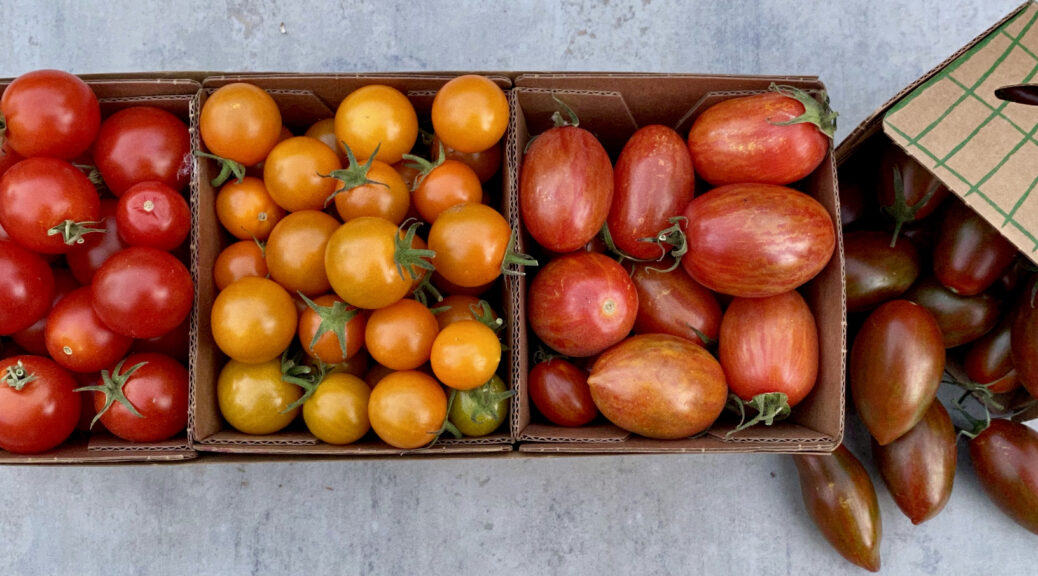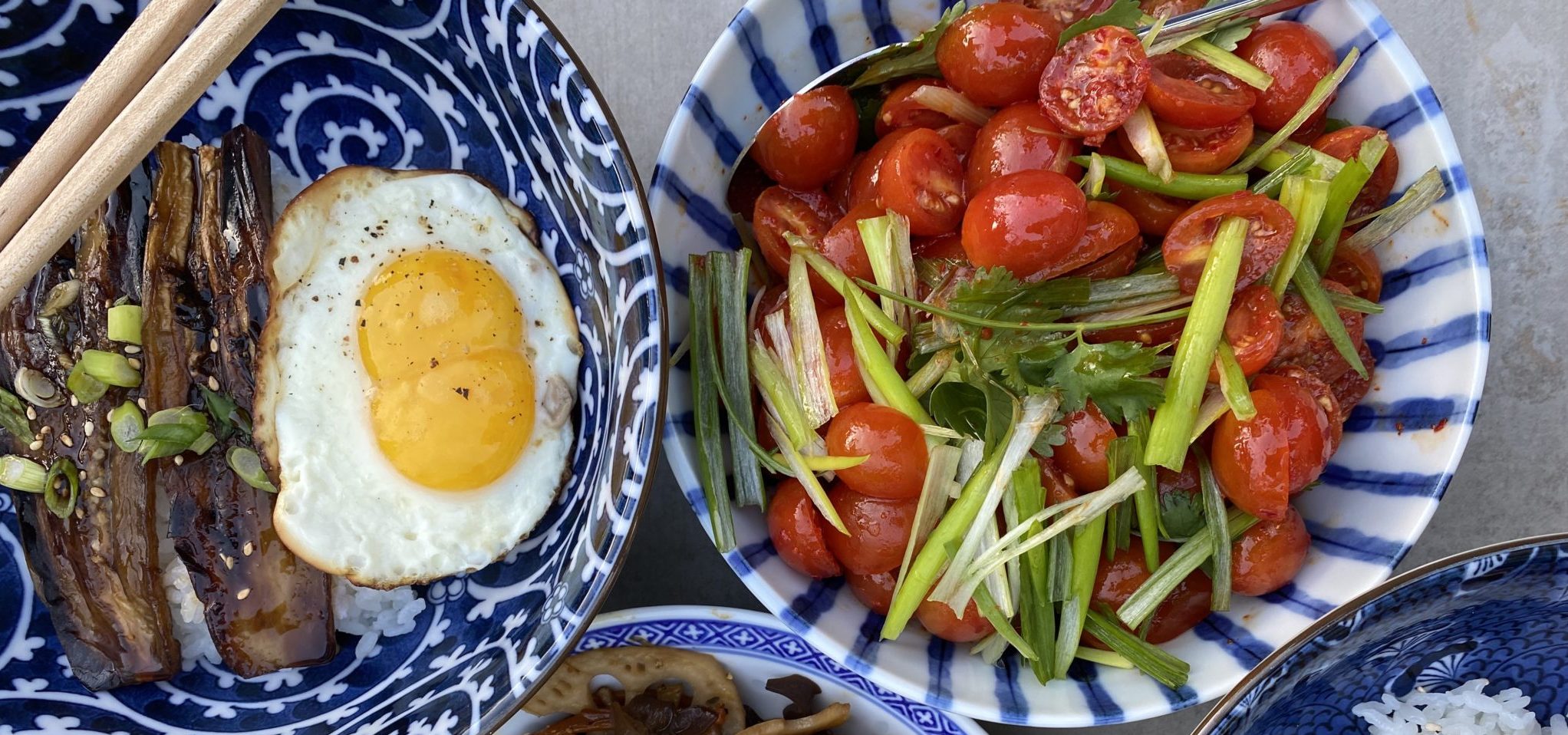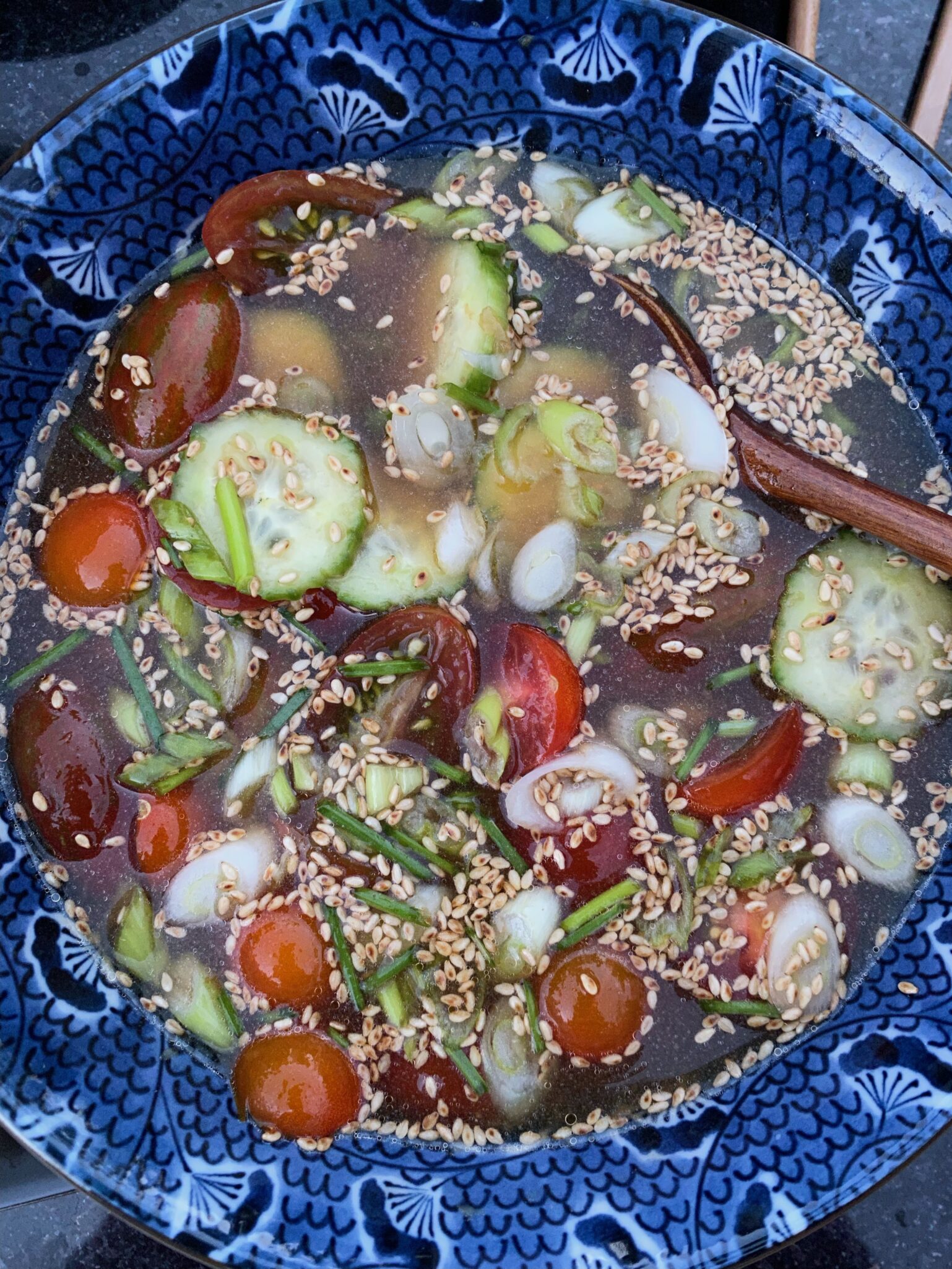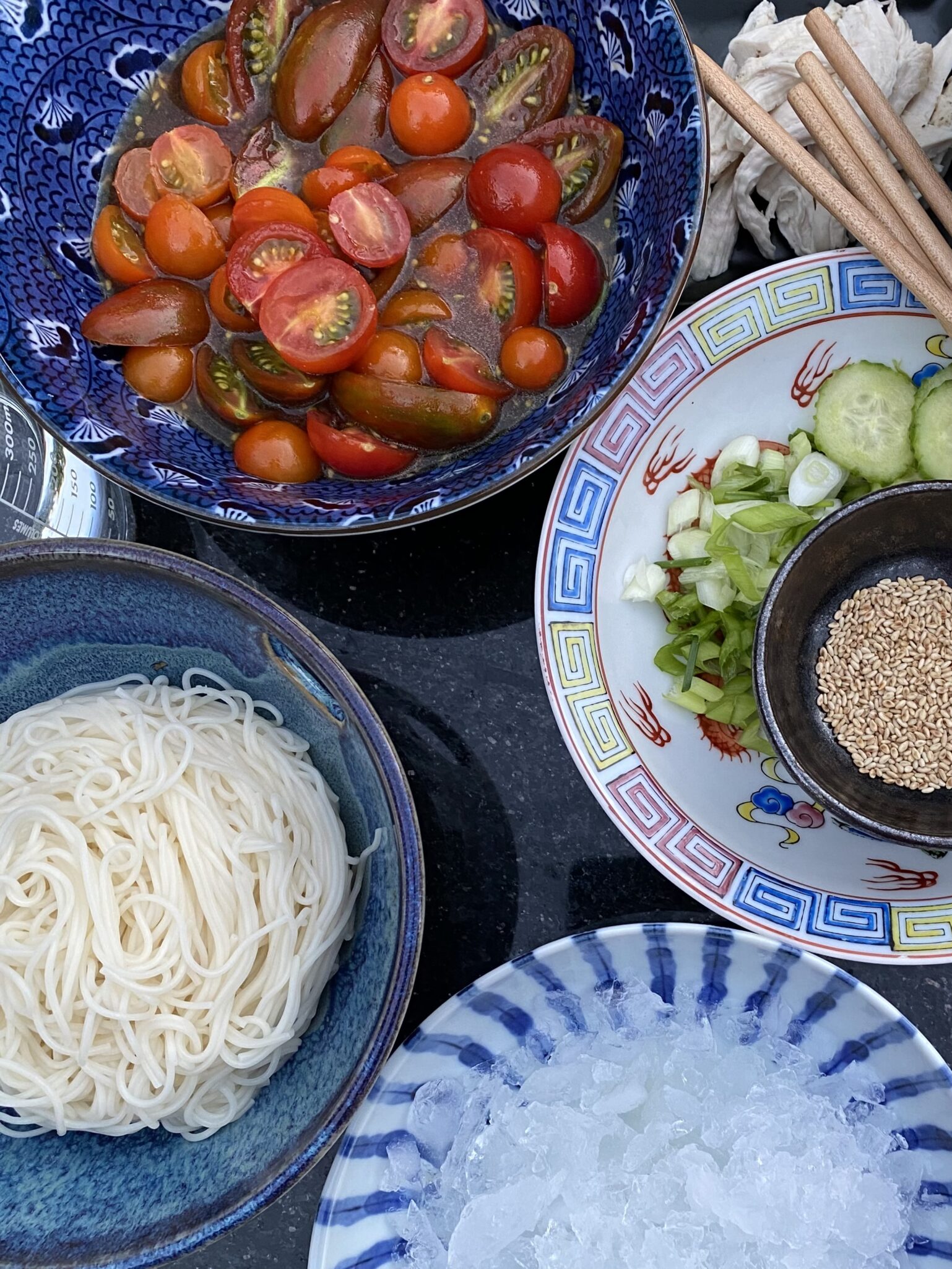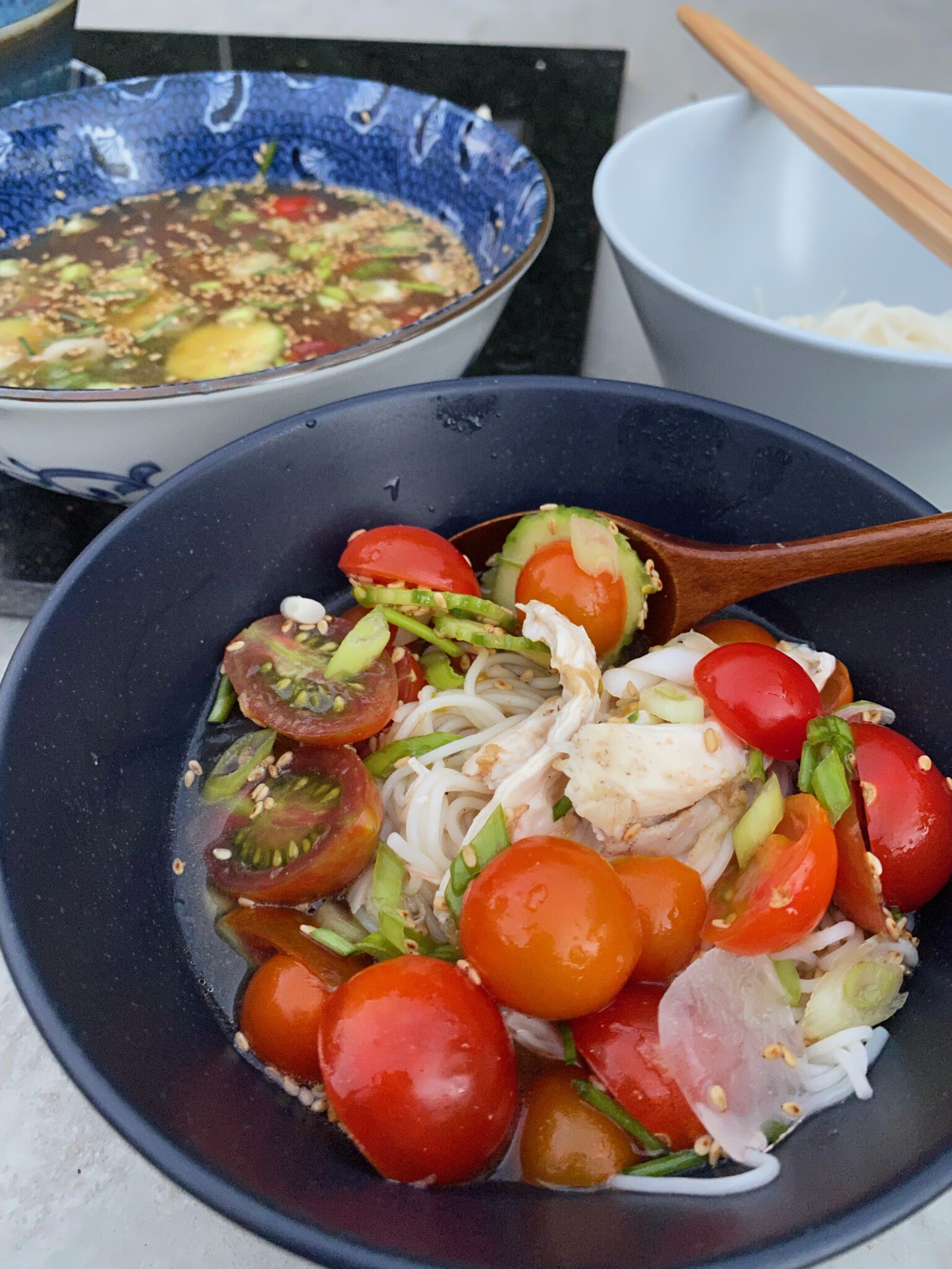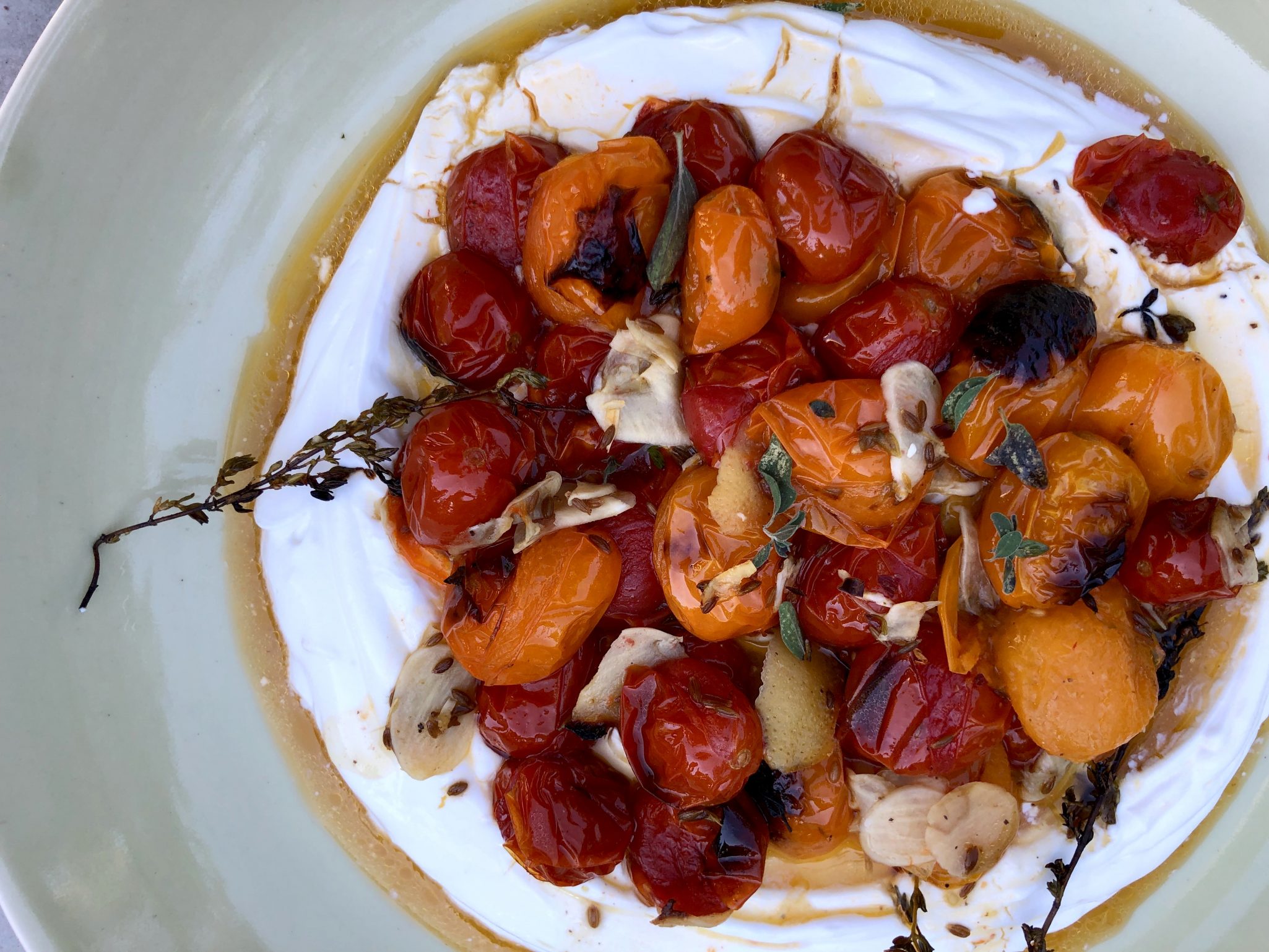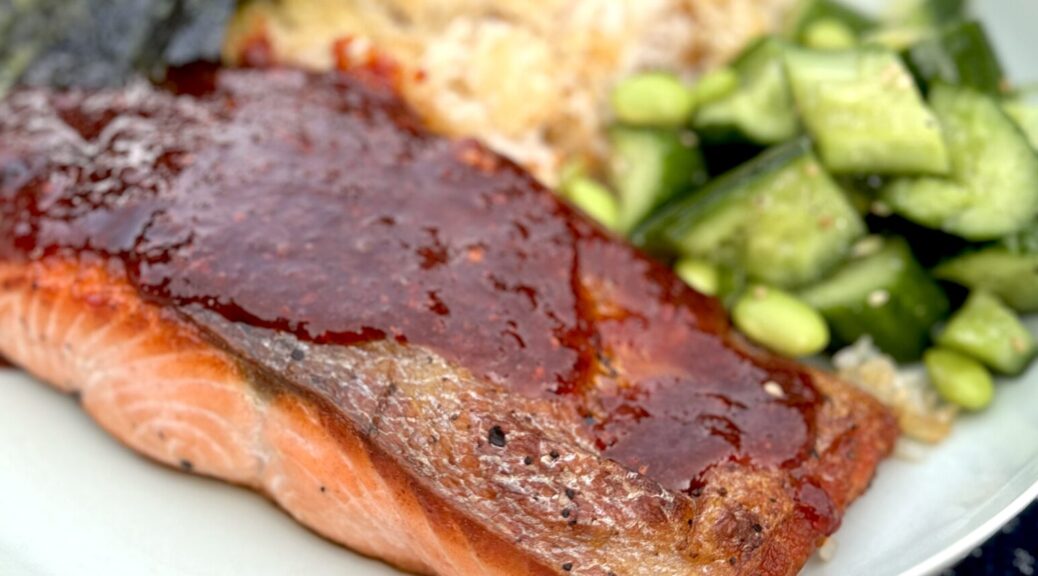
Gochugaru Salmon with Crispy Rice-Yet Another Eric Kim Winner
Another winner from Eric Kim, NYTcooking columnist, cookbook author, and writer. Like many of his recipes, this one is very approachable, comes together quickly, and packs a one-two punch of flavor and texture. The first time, I didn’t bother making the crispy rice. MISTAKE. The salmon and glaze are delicious but the crispy rice pushes it to the next level.
I have made so many of his recipes that I have an index of his recipes included in my post about his delightful pound cake. If you love Sara Lee’s poundcake, you’ll love his version. Here is the Eric Kim Hall of Food, so far…
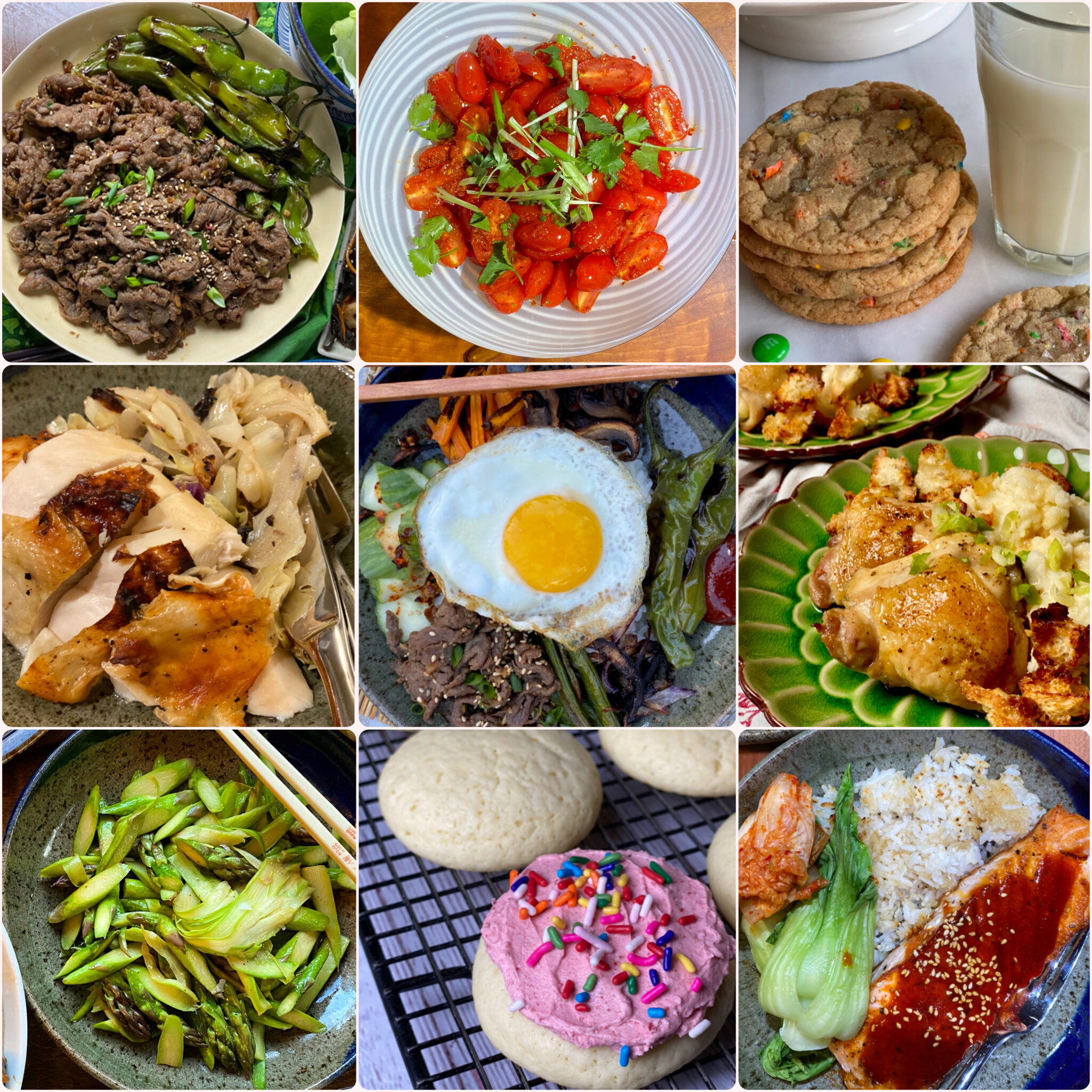
Links are included for the ones I have written notes for so far. One day, I will get through all of them, I hope.
Back to the Fish
Cooked rice-Make this dish when you have leftover rice. Instead of making fried rice with it (come on, everyone makes fried rice with day-old rice), plan on making the crispy rice cake for this recipe. Short grain is stickier so works well for the rice cake.
The Star- 4 fresh salmon fillets, skin on. Salt and pepper the fillets and fry until the skin is nice and crispy. Try not to overcook the salmon, it’s fine when slightly undercooked.
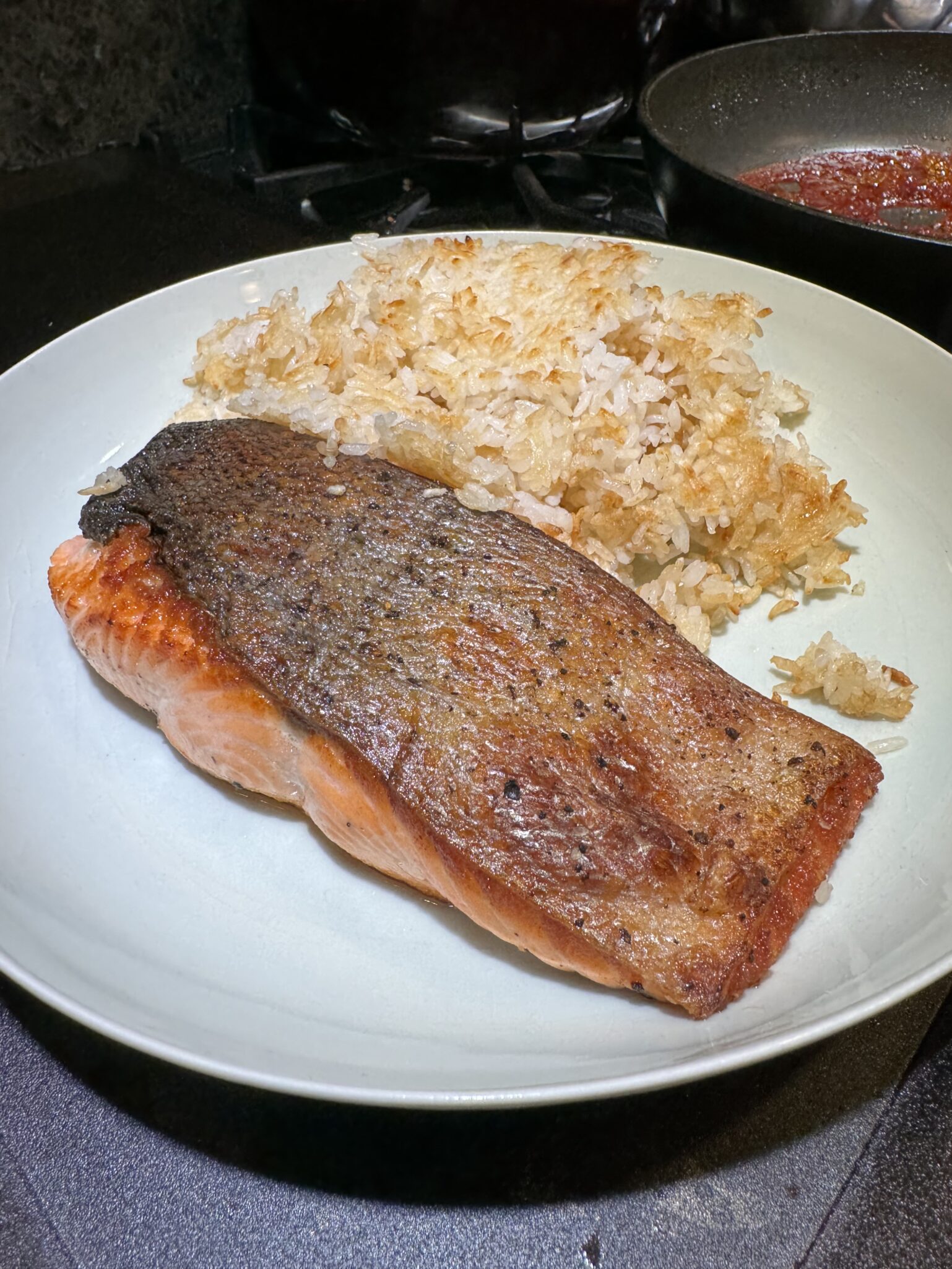
Before the fish gets sauced, pan-frying for nice crispy skin. Imagine that generic video everyone does running a knife over the skin to prove how crispy it is…yep.
The Sauce-pantry staples except for perhaps Gochugaru which is Korean chili pepper flakes (coarse ) or powder (fine). It’s spicy, smokey, and sweet. Find it at most Asian Supermarkets, definitely at H-Mart and Ranch 99. I recommend doubling the sauce, it’s that good.
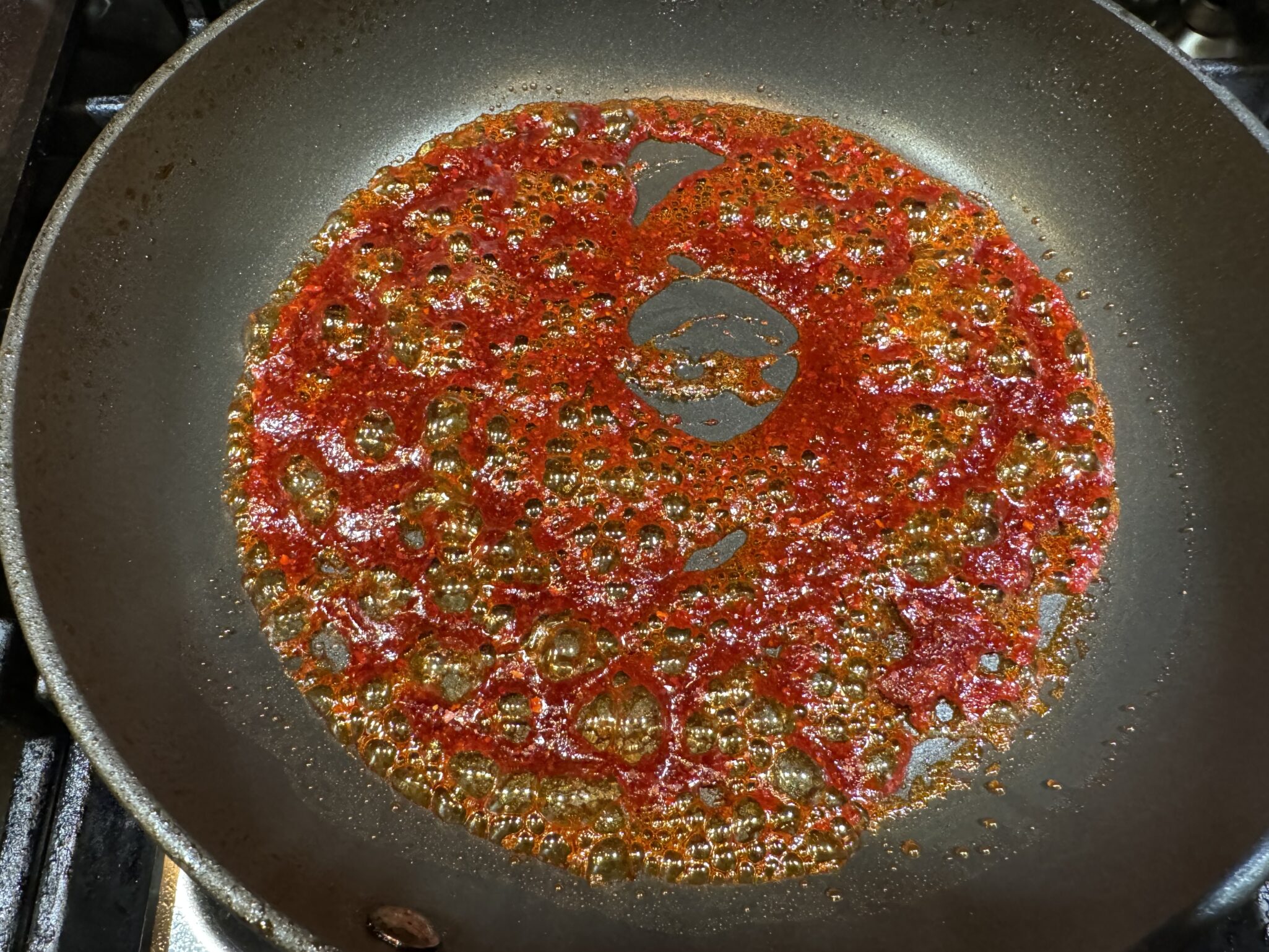
The sauce comes together quickly. Key ingredient. Allow it to come to a boil to caramelize the sauce.
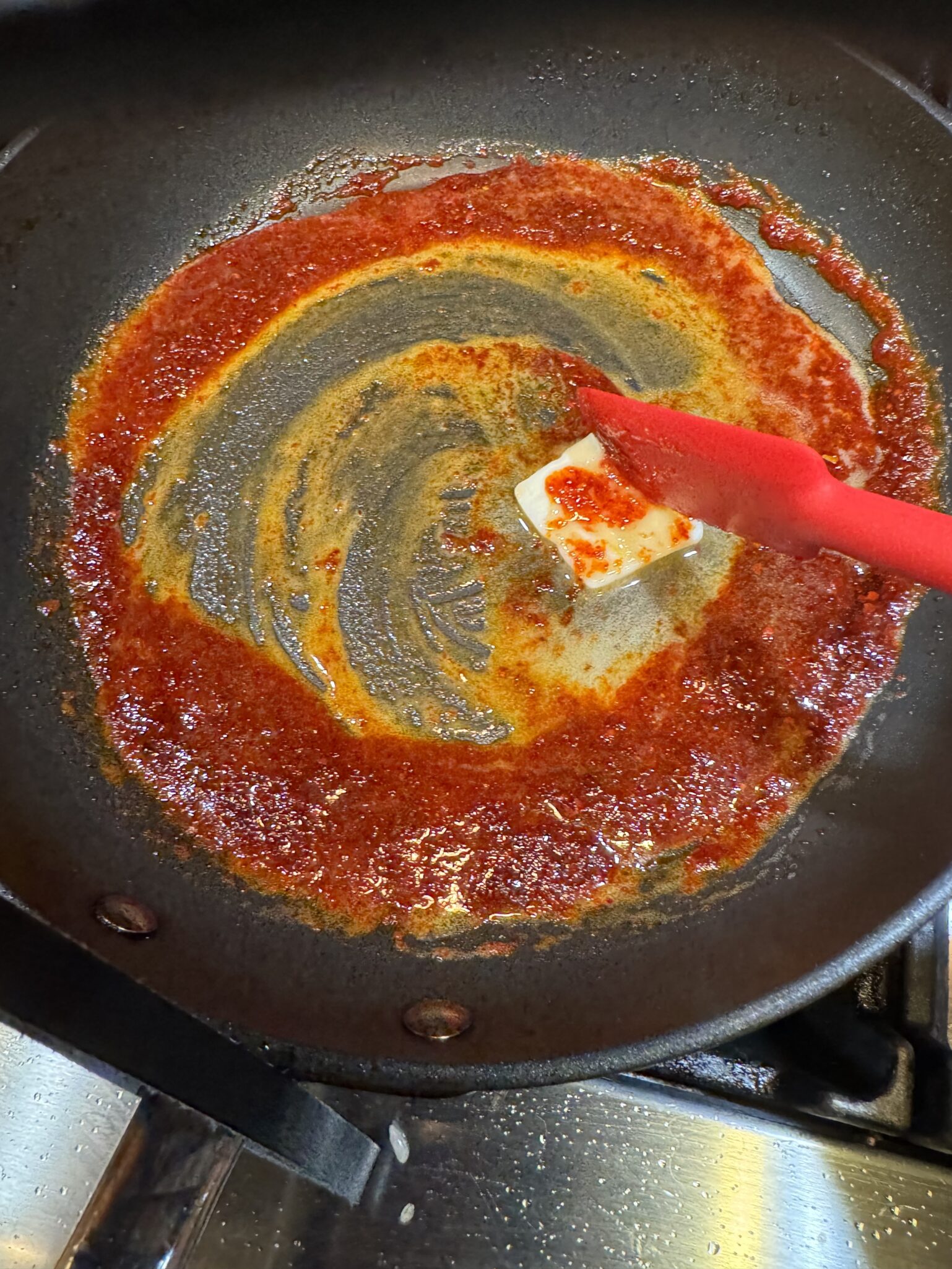
Add cold butter to create a delicious, smooth, creamy emulsion.
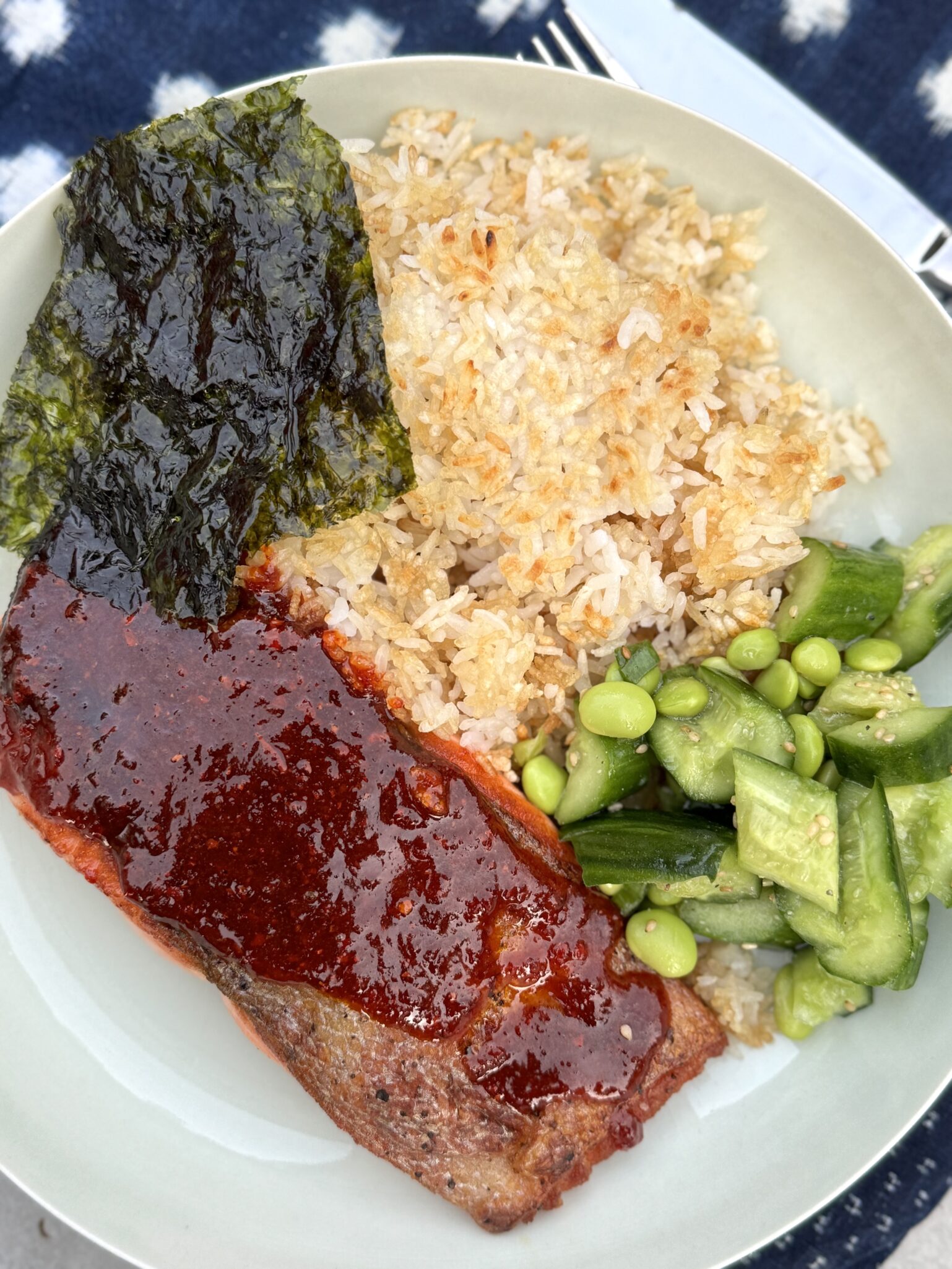
Crispy Rice- Adds time and work to the dish, but it is so worth it! The crispy rice adds a textural element. The rice soaks up the flavor from the oil left in the pan from the fish. Delish!
Serve this with sliced cucumbers, pickles, fresh kimchi, any banchan, or blanched spinach.
Enjoy!
Gochugaru Salmon With Crispy Rice
Ingredients
- 4 skin-on salmon fillets 6 ounces each
- Kosher salt such as Diamond Crystal
- Black pepper
- 1 tablespoon olive oil I use peanut oil
- 4 cups cooked white rice preferably leftover rice, and short grain which is a bit stickier so it stays together
Sauce
- 4 teaspoons gochugaru powder or flakes is fine
- 2 tablespoons maple syrup
- 2 tablespoons rice vinegar
- 2 tablespoons cold unsalted butter, kept whole
Garnish & Sides
- Toasted sesame seeds to sprinkle on fish when done
- Sliced cucumbers or pickles for serving (optional)
- Any Banchan you like, kimchi, potato salad, spinach your choice
Instructions
- Season the salmon on all sides with salt and pepper. Heat a large cast-iron or nonstick skillet over medium-high. Add the oil and sear the salmon fillets skin side down until the skin is browned and crispy, 2 to 5 minutes. The salmon will begin to turn pale coral as the heat slowly creeps up the sides of the fish; you want that coral color to come up about two-thirds of the way for a nice medium-rare.
- Carefully flip the salmon and cook the second side until the flesh feels firm, another 1 to 2 minutes. When you press it, it should not feel wobbly. Transfer the salmon to a plate skin side down and keep the pan with the rendered fat over the heat.
- Add the rice to the fat in the pan and spread in an even layer, packing it down as if making a rice pancake. Reduce the heat to medium and cook until the bottom is lightly browned and toasted, about 5 minutes. You should hear it crackle.
- Flip the rice like a pancake, using a spatula if needed. You may not be able to flip it all in one piece, but that’s OK. Cook until lightly toasted on the second side, another 1 to 2 minutes. Go longer if you want crispier rice, but the trifecta of crispy-chewy-soft tastes wonderful.
- While the rice is cooking, stir together the gochugaru, maple syrup, rice vinegar and 1 teaspoon salt in a small bowl. Set aside.
- When the rice is done, divide it evenly among the plates. In the now-empty pan, add the gochugaru mixture and cook, stirring constantly, over medium-high heat until it bubbles up and reduces significantly, 15 seconds to 1 minute. It should look pretty sticky.
- Turn off the heat and add the cold butter, stirring with a wooden spoon or tongs until fully melted and incorporated into the gochugaru mixture. Pour this glaze over the salmon and serve with cucumbers or pickles.
